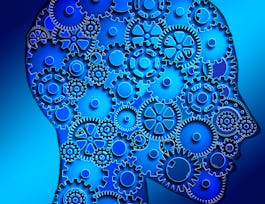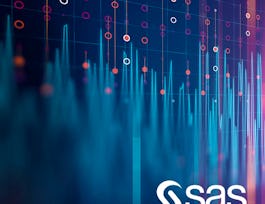This introductory course is for SAS software users who perform statistical analyses using SAS/STAT software. The focus is on t tests, ANOVA, and linear regression, and includes a brief introduction to logistic regression.



Regression Modeling Fundamentals
This course is part of SAS Statistical Business Analyst Professional Certificate

Instructor: Jordan Bakerman
Sponsored by InternMart, Inc
7,853 already enrolled
(52 reviews)
Skills you'll gain
Details to know

Add to your LinkedIn profile
33 assignments
See how employees at top companies are mastering in-demand skills

Build your Data Analysis expertise
- Learn new concepts from industry experts
- Gain a foundational understanding of a subject or tool
- Develop job-relevant skills with hands-on projects
- Earn a shareable career certificate from SAS


Earn a career certificate
Add this credential to your LinkedIn profile, resume, or CV
Share it on social media and in your performance review

There are 5 modules in this course
In this module you learn about the course and the data you analyze in this course. Then you set up the data you need to do the practices in the course.
What's included
2 videos5 readings
In this module you explore several tools for model selection. These tools help limit the number of candidate models so that you can choose an appropriate model that's based on your expertise and research priorities.
What's included
11 videos3 readings4 assignments
In this module you learn to verify the assumptions of the model and diagnose problems that you encounter in linear regression. You learn to examine residuals, identify outliers that are numerically distant from the bulk of the data, and identify influential observations that unduly affect the regression model. Finally, you learn to diagnose collinearity to avoid inflated standard errors and parameter instability in the model.
What's included
18 videos7 assignments
In this module you learn how to transition from inferential statistics to predictive modeling. Instead of using p-values, you learn about assessing models using honest assessment. After you choose the best performing model, you learn about ways to deploy the model to predict new data.
What's included
11 videos1 reading4 assignments
In this module you look for associations between predictors and a binary response using hypothesis tests. Then you build a logistic regression model and learn about how to characterize the relationship between the response and predictors. Finally, you learn how to use logistic regression to build a model, or classifier, to predict unknown cases.
What's included
25 videos18 assignments
Instructor

Offered by
Why people choose Coursera for their career




Learner reviews
52 reviews
- 5 stars
75%
- 4 stars
19.23%
- 3 stars
3.84%
- 2 stars
0%
- 1 star
1.92%
Showing 3 of 52
Reviewed on Feb 13, 2021
Great Study material & Ease of understanding of the concepts.
Reviewed on Jan 25, 2021
Must have taken the prior Course. In the Specialization.
Reviewed on Jun 14, 2021
Thanks so much to our instructor, Jordan Bakerman for teaching this course!
Recommended if you're interested in Data Science

Howard University

University of Washington

Open new doors with Coursera Plus
Unlimited access to 10,000+ world-class courses, hands-on projects, and job-ready certificate programs - all included in your subscription
Advance your career with an online degree
Earn a degree from world-class universities - 100% online
Join over 3,400 global companies that choose Coursera for Business
Upskill your employees to excel in the digital economy




